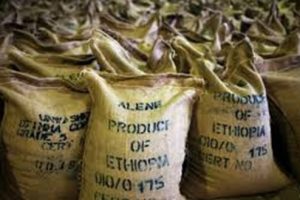
As the most well-known human past, societies in every corners of the world pass times of joy and sorrow feeling pity and empathy one another as intrinsic moral code and the ultimate societal law governing the day today social interactions of human life.
Though mortality is the fate of living creatures, humans are observed to do not accept as they are destined to the inevitable death so that they tried to avert it and resorted to their preferable self defense mechanisms to heal from the heart breaking incident which depart them from their beloved ones.
For this reason people mourn and lament as they see off a departed regardless of the cause for such a natural phenomenon and it is common to erect statues to commemorate the gone. Sometimes temples and land marks might also be constructed based on the social classes and for one’s contributions during life time.
In deed theist societies are optimistic of eternal life where the deceased enjoys everlasting life in the realm of heaven with the absolute being based on his practices on earth. However it seems paradoxical to see humans of theism mourn during the death of others if the deceased is going to join the absolute being though he would be weighed by his practices before death.
The practice of organizing funerals for the deceased revokes something sensible and though it is needed to be left to metaphysics and other disciplines of social science and humanistic.
The practice of organizing funerals is common among various societies of the world though varied from culture to culture, religion to religion across the globe and sometimes celebrated considered as an extra ordinary occasion during the death of people from higher social strata.
Some funerals are unique and of great
importance as primary source for historians to know human past, traditions and values of a given society. Inscription on grave yards, mousselines, temples constructed to commemorate royal families tells something remarkable and clearly depict the time which gone and served as tourist attracting sites.The great pyramids of Egypt, the Taji Mahil of India are well known in this regard.
Ethiopians have elaborate traditions associated with death and bereavement. Though death has become a part of everyday life just like war, famine, and disease; people take it seriously, and almost personally.
When someone dies in Ethiopia, in addition to the conventional signs of grief, there are specific characteristics unique to communities in the rural region. The universal grief responses may be the same but culturally sanctioned rituals vary tremendously among the various ethnic, religious, and cultural groups in the country.
For instance, in southern Ethiopia where various ethnic groups co-exist together Particularly in Konso, the celebration of
the dead takes a longer process. Handling the body, managing the funeral process, and the commemoration of the death follows culturally prescribed rituals. The process of informing family members is handled with great sensitivity. News of the death is orchestrated carefully, and done by a group of elderly or respected community members.
Ethiopia, being the home of numerous cultures, there are enormous traditions like unique funerals practiced by practiced by the diverse nation nationality and people of the multi ethno-lingual country of the Horn Africa.
The Konso are one of the nationalities well known for their unique funeral organized for the tribe chiefs. The konsos funerals is more resembles with the ancient Egyptian in the preservation of the chiefs corpse who is called Kalla according to their tradition.
The Konso build wooden crave statues on the grave yards of the Kala. Those statues are called Wagas or wakas and represent dead Konso chiefs or heroes who had great
life (they killed animals, enemies..). They tend to be very rare nowadays as antiques shop have bought the oldest ones…
These stylized wooden carvings are arranged in groups, representing the man, his wives, and his adversaries.
A waga, also known as a waka or waaka, is a type of memorial statue carved from wood in southern Ethiopia. The Konso people are particularly well-known for their waga sculptures.
Modern wagas or mini-wagas may also be carved specifically for sale to tourists, in which case the rod-shaped kallaccas on their heads are often exaggerated into phallic shapes.
Apart from such remarkable tradition, the Konsos have also strong desire and feeling of stewardship for wellbeing of environment and natural conservation. The United Nations Educational, Scientific and Cultural Organization (UNESCO) has added in September 2011 the ‘Konso Cultural Landscape of Ethiopia’ to its World Heritage List.
The Ethiopian Herald April 30/2012
BY LAKACHEW ATINAFU




